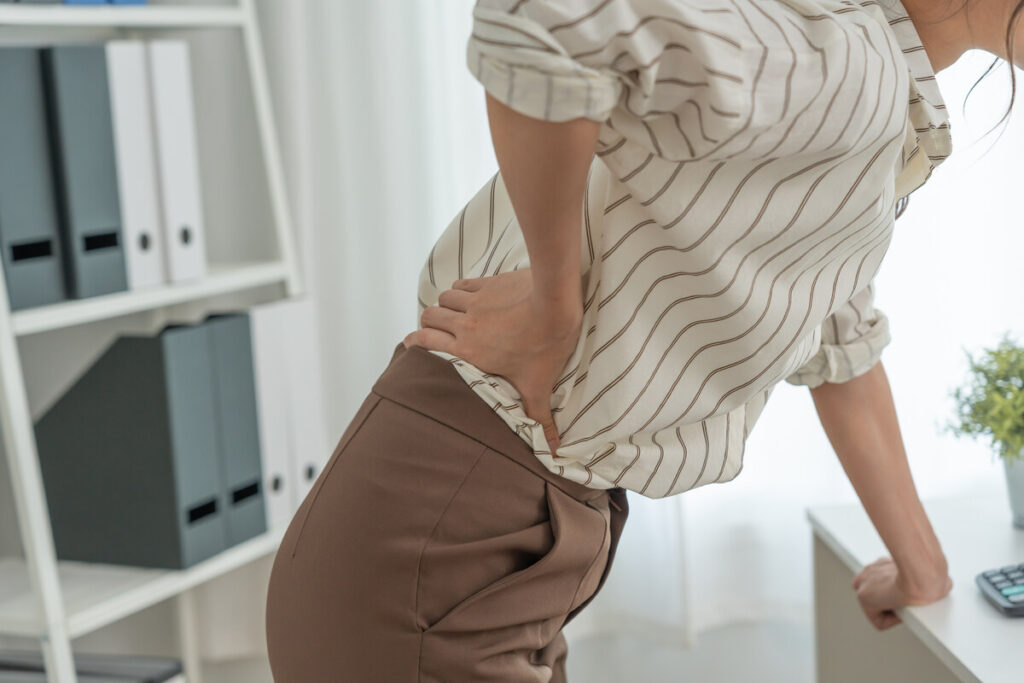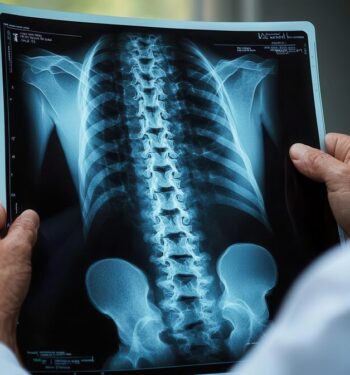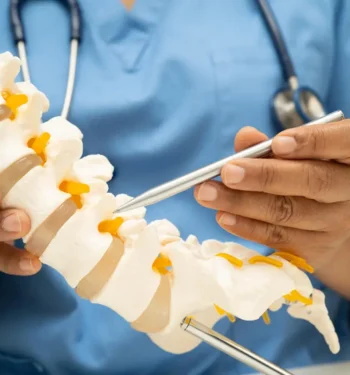
Lower back pain is common, but when it spreads into the arms or legs, it may indicate a more specific condition, such as a herniated disc. This happens when the disc’s soft center pushes through its outer shell, often irritating nearby nerves.
Recognizing key herniated disc symptoms early can lead to better outcomes and faster relief. If you’re seeking herniated disc treatment in Indiana, this blog post will explore typical signs of a disc herniation, how these signs compare to similar issues, and when exactly to seek help.
What Are 3 Signs and Symptoms of a Herniated Disc?
Because they can affect different areas of the spine, herniated disc symptoms can vary. That said, common signs include:
- Pain Symptoms: When discomfort travels — such as from the lower back into the legs or from the neck into the arms — it may indicate that a disc is pressing on a nerve. This is found in both lumbar and cervical herniations.
- Numbness or Tingling: A “pins and needles” feeling in the same area as the pain is another common indicator and typically follows the path of the affected nerve.
- Muscle Weakness: If you struggle to climb stairs or grip objects, it could be a sign of nerve pressure. Exploring herniated disc treatment options at this stage can help stop further decline.
In more severe cases, herniated disc emergency symptoms may include loss of bladder or bowel control, sudden weakness in a limb, or numbness in the groin or inner thighs. These require immediate care.
Early intervention can reduce the risk of long-term nerve damage. If you’re noticing any of these signs, speak with a healthcare provider immediately. Request an appointment at Goodman Campbell to get a clear diagnosis and treatment path forward.
What Can Be Mistaken for a Herniated Disc?
It can be difficult to identify the source of pain because herniated disc symptoms can mimic or overlap with other conditions. Some of the most commonly confused conditions include:
- Sciatica: Often caused by a herniated disc, it can also result from muscle tension or bone growths. If imaging shows no disc involvement, the cause of pain may be something else.
- Muscle Strain: Tends to be more localized than herniated discs and usually heals with rest; doesn’t typically cause numbness or radiating pain.
- Spinal Stenosis: Can cause nerve pain and weakness. Spinal stenosis symptoms worsen when walking or standing and improve when seated, unlike herniated disc pain, which may flare up while sitting.
- Arthritis or Spondylolisthesis: Spine issues appear gradually and may mimic herniated disc symptoms. These conditions are more often linked with stiffness and joint discomfort.
Understanding what causes a herniated disc can help with both prevention and early action. Age, poor lifting technique, extra body weight, and long periods of sitting all add stress to spinal discs.
If you experience red flag symptoms, such as bladder changes or sudden weakness, seek care immediately, as these may be herniated disc emergency symptoms.
Does a Herniated Disc Go Away on Its Own? Healing and Treatment Options
In many cases, yes.
Healing Process and Timeline
Mild cases often improve within 6 to 8 weeks with rest, ice, stretching, and anti-inflammatory medications. More persistent cases may need targeted herniated disc treatment, including:
- Pain Relief: Medication may be used to reduce pain.
- Physical Therapy: Custom exercises can ease pressure and strengthen the area around the disc.
- Surgery: If conservative approaches fail, surgical treatment may be considered.
For those asking how to heal a herniated disc quickly, early action is key. Prompt diagnosis and consistent care can reduce pain and restore movement.
Signs a Herniated Disc Is Healing
You may notice:
- Less pain/improved comfort
- Muscle strength returning
- Less reliance on medication
- More ease in performing daily tasks
These improvements are promising. The signs that a herniated disc is healing often appear slowly, but progress is possible with the right support.
Take Control of Your Recovery
Still wondering, “What does a herniated disc feel like?” If symptoms persist or worsen, talk to a specialist who can confirm the diagnosis and guide you toward recovery.


